How many days does a chicken sit on eggs and how to breed the offspring correctly
Natural incubation is used in households and small farms. If you carefully study the rules for breeding chickens, then even a novice poultry breeder will be able to get healthy and numerous offspring. About how many days the chicken sits on the eggs and how this period should pass, we will tell further.
Introduction
The hen is capable of laying eggs without the help of the rooster, but for the chicks to hatch, he must first fertilize the egg. Getting healthy offspring is impossible without a good breeder. Male sexual maturity begins after 6 months, and fades out at 5-6 years. An old rooster can be easily distinguished by its spurs - they are long and curved upwards.
Individuals 1-3 years old are considered the most prolific. Before you let the rooster into the hen house, you need to make sure that he is healthy. The male should have a bright comb and dense plumage, without bald patches. If parasites are present, they should be removed with special preparations or an ash bath. There should be 10-12 chickens per producer.
Preparing to hatch eggs
Arrangement of the nest
The chicken is a shy individual, so the nest should be placed in a quiet, darkened and fenced off place. Put sod or a dense piece of cloth on a dry floor, then add straw or hay, and put feathers and down on top. Craft the nest with a recess in the center and sealed corners, then the eggs will not roll out from under the hostess. It is important not to be mistaken with the size of the dwelling - the hen should sit freely, but completely cover all the eggs (usually the nest is 45-50 cm long and 30-35 cm wide).
Important! If there is a threat of rats, weasels or other predators entering the premises, the hatching area is suspended at a safe height to avoid the loss of eggs.
It is necessary to fence off the hen's shelter with a light canopy, so that when absent, she throws it back without effort. If there are several birds in the incubation, place them at a distance from each other, otherwise there will be a confusion of nests, which often ends in a fight. There must be food and water nearby, in case the chicken does not want to walk.
In a hot room there is a risk that the chickens will hatch ahead of time, and in a cold room the embryos freeze - the optimum air temperature is + 14-18 C. The nest must be prepared in advance so that both the deceiving eggs and the real hen hatch in the same place to which they are accustomed.
In some cases, an experienced crotch itself indicates to the farmer the angle he likes to incubate. She sits or stamps on this place for a long time. In such a situation, you should go to meet her and equip the nest there.
Choosing the right hen
Laying hens lead an active lifestyle, and meat birds are heavy and capable of crushing future offspring. Therefore, meaty breeds of chickens or simple mongrels are best suited for incubation. The optimal time of the year for hens is spring. At this time, the instinct of motherhood rises, and farmers do not need to heat the room during the incubation period.
3-4 weeks before hatching, the hens should be observed to identify a possible brood hen. First, pay attention to the following signs:
- the bird loses activity and reluctantly leaves the chicken coop;
- clucks for a long time and loudly even at night (hence the name - kvochka);
- pluck out its feathers and cover a secluded place with them.
With this behavior of the chicken, you need to make sure that it is ready to hatch. To do this, dummies of eggs should be laid in an equipped nest and a bird should be planted on them (usually blendes are made from eggshells or buy plastic ones). If the female is not inclined to incubation, after 2-3 days she stops coughing and leaves the place. A real hen stays in the nest, and then natural eggs can be laid under it.
If no suitable bird is found, you can force the hen to incubate the chicks. To do this, you need to choose a female that has incubated eggs at least once and put it in a dark and quiet place on a nest with dummies.
Cover it on top with a basket or any suitable container with good ventilation and keep for 4-5 days, bringing food and water 2 times a day. If the chicken calmed down and cackled, she agrees to hatch the offspring.
Important! Before starting incubation, it is necessary to rid the bird of skin parasites. Sick and weakened chickens with rare plumage and poor appetite should not be used for incubating chickens!
Selection of eggs for incubation - which and how much to take
When the brood hen has sat exemplarily on the deceiving eggs for the allotted time, it is necessary to replace them with real ones. To choose high-quality material for incubation, you must follow the selection rules:
- The egg should be fertilized in a favorable environment - 1 rooster for 10-12 chickens.
- Choose healthy, young, but sexually mature hens (7-18 months).
- Lay medium-sized eggs, because large specimens often contain 2 yolks, and small ones contain weak embryos.
- The eggshell must be clean and smooth, free of cracks or other defects.
- Before use, check with an ovoscope (in its absence, illuminate with a powerful flashlight). Discard if any suspicious clots or discoloration are found.
- Choose only fresh eggs. They should be no more than 5 days (the storage temperature of the incubation material is from +8 to +12 C).
The number of eggs should be taken into account according to the size of the bird - the larger the hen, the more pieces can be placed (from 8 to 14 pieces). The exchange should be carried out in the evening, when the chicken is calmer. To do this, you need to wait until she leaves the nest herself. Lay eggs tightly to each other, in one row.
On a note! The chicken is capable of incubating the eggs of other domestic birds - ducks, turkeys, geese and pheasants.
Caring for a brood hen during incubation
When the hen has sat down on the nest with real eggs, she should not be disturbed for the first 3-4 days. An unexpected touch or harsh sound can be stressful and she will refuse to incubate. During incubation, the hen must be carefully looked after:
- feed grain with a high content of proteins and fats, add minerals and vitamins, root crops and greens to the diet;
- monitor drinkers, change or add water on time;
- if the chicken does not leave the nest in the daytime, then it must be carefully removed from the perch and taken out into the street - it must sometimes move and swim;
- during her daytime exercise, all eggs should be reviewed and damaged ones removed so that their decay does not destroy healthy embryos;
- in the absence of a quill, clean the nest, replace dirty bedding and feathers, inspect them for parasites and remove insects upon first detection;
- monitor the temperature in the room, in case of a sharp cold snap, establish a favorable climate using artificial heating;
- do not allow strong drafts near the nest and direct sunlight on it, there should be twilight inside;
- monitor the duration of the chicken walk - it should not exceed 15-20 minutes, otherwise the embryos may freeze and die;
- in case of refusal to return to the nest, the hen must be carefully planted, not paying attention to its persistence, and the first 2-3 hours should be watched so that it does not run away.
It is better to walk and feed at the same time, she is able to quickly get used to the regime and leave the nest on schedule in the following days.If necessary, lift the hen from the nest carefully - if the egg gets stuck under the wing, it can slip out and break.
Carefully! When checking eggs for quality, new specimens should not be put in place of the spoiled ones. The hen will leave the shelter as soon as the first chicks hatch, and the fresh embryos do not receive the necessary heat of the hen and will die.
Development of the embryo and the timing of incubation of chickens
Nature has laid down the time for the growth of the embryo and the birth of the chick - 21 days. However, the environment in which the chicken stays in the nest can influence the timing of embryo development. At elevated indoor temperatures, chicks can hatch on the 18th day. If it gets colder to + 11-13 C, then this period increases to 23 days.
Checking the development of the embryo with an ovoscope is carried out 3 times during the entire incubation period - at the end of each week. After the first 6 days, blood vessels appear on the yolk of a benign egg. If dark, ring-shaped clots are visible, then this is a marriage. The option, when there is only a light, monochromatic mass inside, means that the egg has not remained fertilized.
On days 11-12, against a general light background, the shadow of the embryo is already visible, surrounded by a network of vessels. After 17 days of incubation, you can see not only the enlarged body of the chicken, but also feel its movement from the side of the blunt edge of the shell. For a brood hen, the last 3 days of incubation are as disturbing as at the beginning of the stage.
From day 18 onwards, the chicken should not be disturbed, but leaving it unattended is also risky. If the chicks hatch ahead of time, the brood hen can immediately drop the rest of the eggs and leave the nest. Therefore, it must be closely watched. When she actively moves, it means that the first chick has appeared. The hatched chicks are left near the hen for several hours to dry out and warm up.
What to do if the chicks haven't hatched
In the process of growth, the embryo develops an egg tooth - it is with its help that the chick breaks the shell. During incubation, the structure of the shell becomes thinner every day, and by the time the embryo is born, it becomes completely fragile. The chick can hatch slowly, during the day, gradually breaking the barrier.
First, small cracks appear on the egg, which increase in a circle. The chick then beats into the shell more vigorously, and is soon released. However, it happens that the embryo does not have enough strength to get out on its own. If you disturb an immature chick, then it is easy to destroy it, therefore it is allowed to intervene after 21 days.
If damage is visible on the surface of the egg, and a squeak and movement is heard from the inside, then you can help the chicken. It is necessary to release it from the side of the cracks, acting carefully so as not to harm the fragile creature. After removing the chick, immediately place it next to the other babies. When the offspring is dry, they should be placed in a cardboard box lined with soft cloth or hay.
The first days of newborn chickens must be raised at a temperature of + 28-32 C. After 2-3 days, they are returned under the wing of the brooding hen or raised separately. The brood, which is near the hen, develops faster than the weaned chicks.
How to wean a hen from a nest
It happens that the chicken has done its job, but does not leave the nest and constantly clucks. To force the hen to leave the brooding site, pour cold water over it and close it in a dark room. The water will lower the body temperature and the bird will calm down.
If this method does not help, then the quail should be planted in an empty nest without feathers and eggs, and left alone for a couple of days, releasing it 2 times a day for a short walk. She quickly gets bored and wants to return to her neighbors.
Experienced Farmer Tips
Poultry farmers with experience distinguish two meat-bearing breeds of promising brooding hens, which are distinguished by their productivity and developed maternal instinct:
- Kuchinskaya Jubilee is one of the most popular and beautiful breeds of domestic chicken.This bird is unpretentious in care and easily tolerates cold weather. When hatching eggs, it shows more than 90% of the survival rate of the offspring.
- Welzumer ordinary - has the ability to carry out the incubation process without the help of the owner. To do this, he independently chooses a place, builds a nest and incubates eggs, after which he diligently takes care of the chickens.
Fact! Chickens love to wallow in ash - in this way they clean the plumage and skin from parasites and dirt. During the incubation period, it is useful to place the ash box near the nest (can be replaced with clean sand).
Conclusion
If you choose the right hen, put it in a suitable place and put selected eggs from healthy producers under it, then the risk of getting a bad result is reduced to zero. The chicken is a grateful bird, she will appreciate the efforts and care of the owner and in return will bring strong and numerous offspring.
Watch a video about the process of incubating eggs:



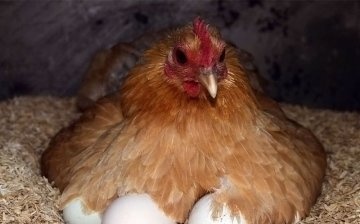
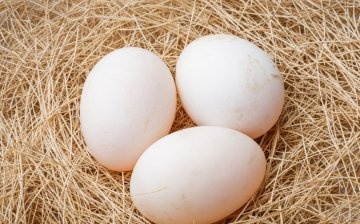
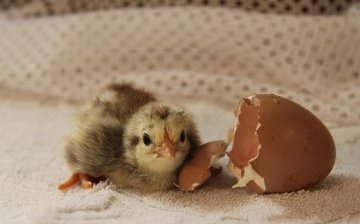



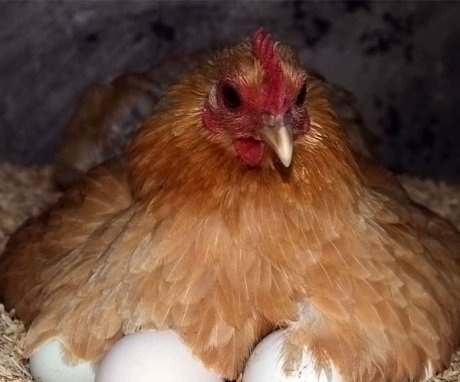
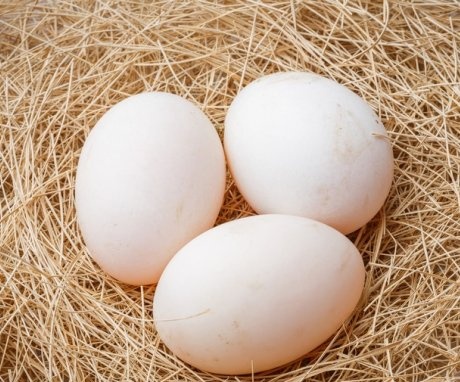

Currently, many poultry farmers receive chickens in incubators, because, a brooding hen, will be able to hatch only 14 chickens, and this amount, for a large farm, is very small.
I was not lucky with hens. The first couple of days I sat diligently on dummies, and after being replaced by eggs, left the nest on the fourth day. The second turned out to be diligent, but due to inexperience, he did not follow and fleas seized her. After that, he abandoned the hens. Made an incubator for 40 eggs and hatched chicks in an incubator.
I would like to add about the choice of eggs for incubation.
When I started hatching chickens in an incubator for 40 eggs, a neighbor (from whom I took eggs) showed the "old-fashioned" way of selecting them correctly. We examined the eggs into the light using an old filmoscope. In addition to the absence of cracks in the shell, the air bag should be no more than a ten kopeck coin from the times of the USSR and is located strictly on the side of the blunt end of the egg. If the air shell is on the side, or from the pointed part, this is a marriage.
Checking eggs in this way, I had 35-37 chicks coming out of an incubator for 40 eggs.
Just today I heard on the radio an advertisement for an incubator, some kind of completely new one. And I wondered if there are automatic incubators that can hatch 90% of the chicks? I remember from childhood, my mother bought several incubators, and if at least half hatched, it was an achievement. How are things in this area now?